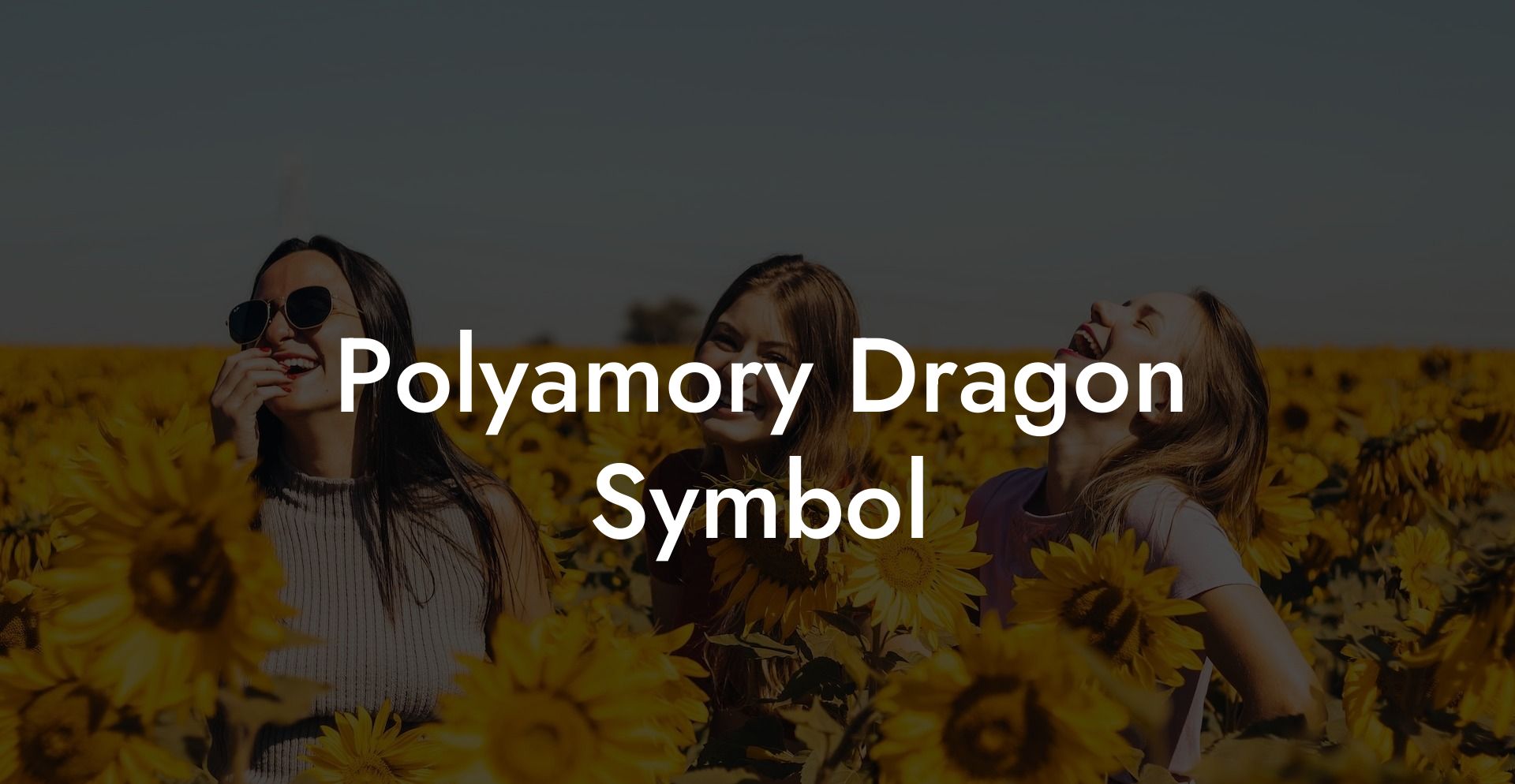The world of non-monogamy comes with its fascinating symbols and the Polyamory Dragon is one of them. Discover the meaning behind this intriguing emblem, and learn how it represents the unique values and connections cherished by polyamorous individuals in this engaging article.
Polyamory Dragon Symbol Table of Contents
What is the Polyamory Dragon Symbol?
The Polyamory Dragon Symbol is an emblem that represents the polyamorous community and the values they hold dear. A visual representation of a concept or idea, this symbol is a colorful dragon, often depicted together with a heart or infinity heart to reinforce the idea of limitless love. The image of the dragon is chosen for its powerful and mythical nature, which conveys the strength, resilience, and determination required for maintaining and fostering multiple loving relationships.
Why a dragon?
Dragons are mythical creatures that have been celebrated across various cultures for centuries. They symbolize a variety of qualities including strength, wisdom, and power. The choice of the dragon for the polyamory symbol reflects the unique nature of polyamorous relationships, embodying the strength required to navigate the complexities and challenges faced in these connections. Additionally, dragons are known to fiercely protect their treasures, representing the need for individuals to safeguard their various loving relationships.
Other Polyamorous Symbols
While the dragon is the central symbol of polyamory, there are other emblems that are also used to celebrate the nature of non-monogamous relationships. These include:
- The Infinity Heart: A horizontal figure-eight (infinity symbol) intertwined with a heart, the Infinity Heart represents the limitless capacity for love in polyamorous relationships and the bonds that connect individuals indefinitely.
- The Parrot: Similarly resonating with the idea of freedom, the parrot is a light-hearted, colorful symbol representing the open nature of polyamorous arrangements and the vibrant diversity that characterizes these relationships.
- Polyamory Flag: Comprising of blue, red, and black stripes, with a gold Greek pi letter in the middle, the flag represents the values of loyalty, passion, and solidarity found in polyamorous relationships, as well as the value placed on individuality.
How the Polyamory Dragon Symbol Serves the Community
Like any other emblem, the Polyamory Dragon performs specific functions in the community, including:
- Fostering Pride: The Polyamory Dragon symbol represents the values and ideals of the polyamorous community, helping to cultivate pride and a sense of identity among those who participate in non-monogamous relationships.
- Promoting Awareness: Through its striking imagery, the dragon entices curiosity and sparks conversation, allowing members of the polyamorous community to raise awareness about their lifestyle and values.
- Creating Connections: Recognizable to those familiar with polyamory, the symbol can help to identify like-minded individuals and create a sense of camaraderie among members of the community.
Polyamory Dragon Symbol Example:
Imagine attending a social event or party wearing a necklace adorned with the Polyamory Dragon Symbol. The striking image is likely to capture attention, prompting inquiries about its meaning. This provides a natural opportunity for you to share your experiences and educate others about polyamorous relationships. As the evening progresses, you may even spot someone else sporting the emblem, offering an immediate connection and a shared understanding of one another's values and lifestyle choices.
As you can see, the Polyamory Dragon Symbol is a powerful emblem that encapsulates the essence of polyamory and enables individuals to express their unique relationship choices with pride. By understanding the significance of this symbol, we can better appreciate the strength, resilience, and endless capacity for love that characterizes polyamorous relationships. If you found this article intriguing, don't hesitate to share it with others and explore additional guides on The Monogamy Experiment to gain a deeper understanding of this fascinating world.













